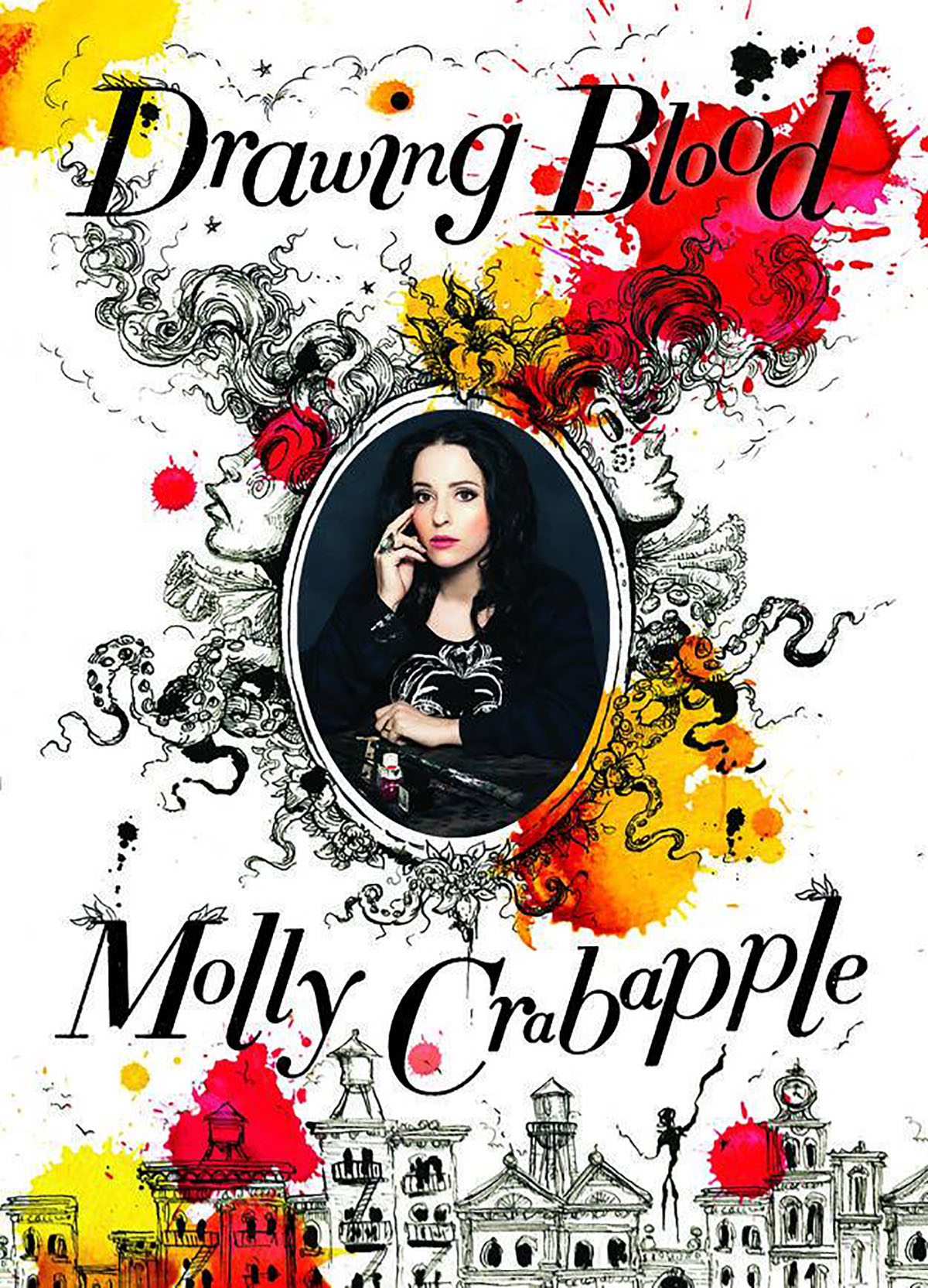#617: Artist Molly Crabapple on ’90s Goth, Making Comics, and How You Can Help Syria
This post originally appeared on Vanyaland.

Molly Crabapple / Courtesy photo by Clayton Cubitt
Previously hailed as Occupy’s greatest artist, Molly Crabapple has spent much of her recent career decimating the line between art and journalism. Her work has been published in places as varied as the New York Times and Vice (she’s now a columnist at the latter), and she’s traveled the world, sketchbook in hand, to document events as momentous as the trial of Khalid Sheikh Mohammed, the Ferguson protests, and the continuing conflict in Syria. Her new memoir, Drawing Blood, traces her evolution as an artist and as an activist.
In advance of her reading and signing copies of her memoir at the Brookline Booksmith this Tuesday, December 8, Vanyaland caught up with Crabapple to do a little 617—our ongoing series where we ask her six questions, request one recommendation, and allow the subject to ramble off seven of…well, anything.
Via email, Crabapple detailed her favorite goth music, the journalists that inspire her, and what the average person can do to help the continuing conflict in Syria.
SIX QUESTIONS
You spend the beginning of Drawing Blood talking about your adolescence, in which you describe growing up goth in the ’90s. You mention Kurt Cobain and include a drawing of him, but what other music had an impact on you growing up? What tapes would have been in your walkman?
Oh god, all the angry, heroin-laced anthems of 1995. I loved Marilyn Manson and Nine Inch Nails and Stone Temple Pilots, but most of all? Courtney Love, wielding her guitar like a cock, straddling the stage like the living embodiment of sex and rage.
Here in Boston, we’ve had a Dr. Sketchy’s Anti-Art School group that’s met at Great Scott, a local venue, for a long time. Why do you think this type of art class has endured all over the world for so long? Do you think people are attracted to expression, knowing that it comes without bitter judgement?
I’m so so honored that a project I started when I was 22, with no money or no-how, is still going 10 years later, and in near a hundred cities around the world. I think people like art, they like seeing boundaries between art forms torn down, they like liquor, and they like to draw models who are personas in themselves.
A lot of your fans were introduced to your art via your work as a comic artist. From your She-Hulk story in Marvel’s Strange Tales to your longer-form projects like Backstage and Puppet Makers, a lot of us wonder if you’ll return to it. What’s your relationship like, currently, with the comic world?
I’m never going to do a comic again. I love the art form as a reader—and so much fuck yeah to Riad Sattouf, Joe Sacco, Leila Abdelrazaq, Warren Ellis, etc. As a creator, though, I’m too damn lazy. Comics are the ultimate underpaid donkey work of the art world. I actually gave up 30 pages into the one graphic novel I ever planned to do.
As a journalist, who would you say are your greatest inspirations? I feel like that’s a question that generally gets asked a lot about with regards to your art, but who would you say you modeled yourself after as a writer?
Ghaith Abdul Ahad, Sarah Nicole Prickett, Matt Taibbi. Laurie Penny and Chelsea G. Summers both mentored me.
Recently, you’ve illustrated a pseudonymous account of a person’s life living in Aleppo for Vanity Fair. How did that project come about? What would you recommend for the average motivated by your work to do to help with the crisis over there?
I’m honored to have Marwan Hisham as a collaborator, and like so many collaborations, it came about on the Internet. In November last year, he was living in the capital of ISIS’s cosplay caliphate. He sent me photos of daily life. I drew them. We became close collaborators, eventually doing two more pieces. I’m honored to work with him—he’s brave as hell, and a subtle, skeptical, luminous writer. The Aleppo project isn’t the last thing we’ll create together.
As long as the war is still going on in Syria, any charity is a bit of a Band-Aid, but it’s still something that saves lives. There are many amazing charities working with Syrians inside the country, and with refugees. I personally recommend [the] Karam Foundation, which supports schools on the Syrian-Turkish border, distributes milk and food inside the country, and warm winter clothes to people living in camps. I’ve worked with them for years, doing murals in schools for refugee kids. Another amazing organization is the Syrian American Medical Society, which, despite the horrific targeting of medical professionals, sets up field clinics in the country and provides life saving medical care to refugees outside it. As always, it’s far far better to donate to small and grassroots groups than giant NGOs like Red Cross.
The new year’s coming up in a few short weeks: what event personal or otherwise defined 2015 for you?
My god, this book. There’s been nothing but this damn book. I went to Gaza and Iraqi Kurdistan and the Turkish Syrian border but basically life is just in the shadow of this ink besmirched monkey that has finally detached itself from my back and gone scampering out into the world.
ONE RECOMMENDATION
One thing? Like advice? Work hard, make friends, don’t give up.
SEVEN OF SOMETHING
Finally, what seven songs you would choose to accompany the reader on their journey through your memoir?
“Lily, Rosemary and the Jack of Hearts,” Bob Dylan
“The Wall,” Johnny Cash
“Aicha,” Khaled
“Ride,” Lana del Rey
“Impossible Girl #4,” Kim Boekbinder
“Chelsea Hotel #2,” Leonard Cohen
“Pirate Jenny,” Nina Simone
MOLLY CRABAPPLE: Free, December 8, 7 p.m., Brookline Booksmith, 279 Harvard St., Brookline, brooklinebooksmith-shop.com.

Drawing Blood cover

